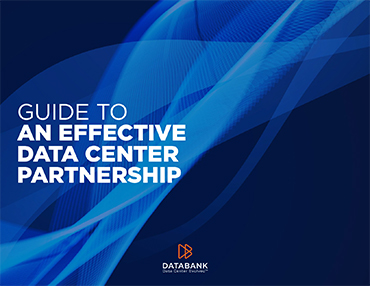Data centers, by definition, hold data. Data is a key business asset. In fact, it is often an organization’s most valuable asset. That being so, it’s vital that all data is appropriately protected. With that in mind, here is a quick guide to what you need to know about protecting data assets in data centers.
Understanding data center security layers
Data center security is generally conceptualized in layers. Here is an overview of the five key layers and their significance.
Physical layer: This refers to safeguarding the physical infrastructure of a data center, including servers, networking equipment, and storage devices, through measures like access controls, surveillance, and environmental controls.
Logical layer: This refers to the protection of digital assets within the data center, such as operating systems, databases, and applications, through authentication, authorization, and encryption mechanisms.
Network layer: This refers to securing the network infrastructure to prevent unauthorized access, data interception, and malicious attacks using firewalls, intrusion detection systems, and encryption protocols.
Application layer: This refers to securing software applications and services running in the data center from vulnerabilities and threats through secure coding practices, patch management, and access controls.
Information security layer: This refers to the overarching framework for managing risks to the confidentiality, integrity, and availability of data assets. It incorporates elements of physical, logical, network, and application security.
The key elements of data center security
There are five key elements of effective data center security. Here is an overview of them and their significance.
Access controls: The foundation of security
Access controls apply to all levels of security including the physical level. Role-based access controls (RBAC) assign permissions based on users’ roles and responsibilities, limiting access to only necessary functions.
These need to be combined with monitoring and auditing of activities to ensure that users behave appropriately. Most of this process should be automated with human oversight. It is particularly important to monitor the use of privileged users (e.g. administrators). Misuse of these accounts can cause serious damage.
Access controls are, however, only effective if they are combined with robust authentication measures. Now, multi-factor authentication is used as standard. Moreover, individual authentication methods are becoming stronger. For example, biometric authentication is becoming more common.
Encryption methods: safeguarding data in transit and at rest
Encryption is the process of encoding data so that it can only be read by someone who has the means to decode it (i.e. the encryption key). This ensures that data remains confidential even if it is accessed without authorization.
There is a wide range of encryption algorithms and protocols that can be used for different purposes. For example, SSL/TLS protocols are typically used to protect data in transit while AES encryption is commonly used to protect data at rest. All forms of encryption, however, depend on effective key management.
Keys must be secure from the moment they are generated. While they are in use, they must be kept protected from any form of unauthorized access. They must also be updated regularly as added protection against malicious actors.
Threat detection: proactive defense mechanisms
One of the most important developments in cybersecurity as a whole and data center security in particular is that it is now proactive, rather than just reactive.
Firewalls, intrusion prevention systems, and intrusion detection systems are now commonly combined into intrusion detection and prevention systems (IDPS). These continually monitor networks looking for signs of concerning behavior. When such behavior is identified, IDPSs can take automated action and/or alert human administrators.
These automated systems now leverage artificial intelligence (AI) and machine learning. The main benefit of this is that it enables them to identify threats more effectively. For example, they are now more capable of detecting novel and/or emerging threats, even sophisticated ones. As an added benefit, it also reduces the likelihood of false alerts.
Incident response: mitigating the impact of breaches
Once a threat has been detected, it’s essential to respond to it effectively. Automated response mechanisms enable rapid and coordinated responses to many common threats. This means that manual intervention is typically only required in more challenging situations.
Security information and event management (SIEM) platforms aggregate and analyze security-related data from various sources, facilitating centralized log analysis for detecting and investigating security incidents.
Correlation and incident prioritization mechanisms within SIEM prioritize alerts based on severity and potential impact, enabling security teams to focus on the most critical threats first, enhancing overall cybersecurity posture and resilience.
Compliance standards: navigating regulatory requirements
In addition to managing security in general terms, many data centers will need to comply with specific data security standards. It is vital to be clear on which programs are mandatory and which are desirable. It is also vital to understand what steps need to be taken to ensure that compliance is initially achieved and then maintained for as long as necessary.






